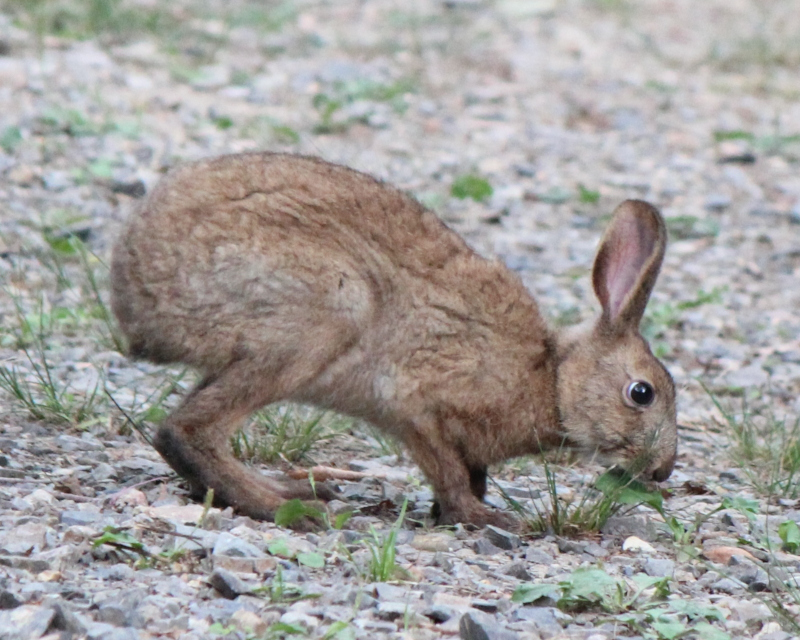
Japanese Hare Facts
- This beautiful product of Nature and evolution is most often referred to by the informative english language common name of Japanese Hare. In Japanese, though, it holds the translated title of Nousagi. For now, it has no other accepted tags.
- Inside the scientific community, however, it’s perhaps better known by its technical moniker. Fortunately, that’s a comparatively simple appellation, as such things go. That’s because the mammal bears the official designation of Lepus brachyurus.
- It received that particular epithet due to the efforts of Coenraad Jacob Temminck. The respected Dutch zoologist accomplished the first recognition of it as a separate and distinct species. He managed that scientifically noteworthy feat in 1845.
- This remarkable Lagomorph holds a rather surprising secret. That’s due to the fact that researchers currently recognize a total of four distinct subspecies still in existence. Given its specific habitat range, that’s a truly startling number of such subgroups.
- Thankfully, the marvelous Japanese Hare appears to be maintaining a population base that’s both stable and sufficient. This pleasant state also seems to hold true across its entire range. The IUCN therefore presently lists the animal as Least Concern.
- The creature nevertheless still faces several potential threats to its existence as a species, at least. Like all forms of life on earth today, most of these stem from the actions of man. These include the perils posed by habitat loss and climate change.
Related Articles
Pygmy Rabbit
Japanese Hare Physical Description
The gorgeous Japanese Hare almost instantly captivates those individuals fortunate enough to encounter one. Yet, the animal does so due to more factors than just its undeniable visual appeal. This also holds true despite the fact that it’s not a particularly large mammal.
Like most of its kin, and indeed most species, it also displays a certain amount of the physiological trait of sexual dimorphism. In the case of this biological wonder, though, the characteristic only manifests itself in terms of size. Females reach larger sizes than males.
Detailing the nature of this becomes quite difficult, however. That’s due to the existence of the various subspecies. Each of these groups display the gender-based variation in size, but to different degrees. Taken overall, though, it’s nonetheless relatively minor.
Taken together, the hare achieves a mean body length measuring 18 – 21 in (45 – 54 cm). The tail develops as quite short, usually reaching between 0.8 – 2 in (2 – 5 cm). Weights also frequently vary significantly, yet typically range from 2.9 – 5.5 lb (1.3 – 2.5 kg).
Like many relatives, the Japanese Hare evolved back legs longer than the front one’s. These appendages usually range from 4.7 – 5.9 in (12 – 15 cm). The front one’s, meanwhile, average 3.9 – 5.9 in (10 – 15 cm). It’s delicate ears generally reach a length of 2.4 – 3.1 in (6 – 8 cm).
Yet, it’s the coloring of this marvel of evolution that garners the most interest. All four subspecies display a primary pattern consisting of mixed shades of dark brown to reddish brown, with small patches of white. In winter, though, two subgroups change to pure white.
- Kingdom: Animalia
- Phylum: Chordata
- Class: Mammalia
- Order: Lagomorpha
- Family: Leporidae
- Genus: Lepus
- Species: L. brachyurus
Japanese Hare Distribution, Habitat, and Ecology
The impressive Japanese Hare developed as endemic to a relatively small portion of the surface of the earth. That’s zone of habitation is also isolated, compared to that of many other similar creatures. As its name indicates, the animal evolved as native to Japan, in Asia.
However, the nature of the country is also the reason for the variations in the subspecies. The lovely mammal lives on three of the four main islands, and many of the smaller one’s. The lone exception to this presence among the major isles is that of Hokkaido.
Fortuitously, Nature provided this work of art with a hgih degree of adaptability in regards to its choice of habitat. The hare thus appears in a surprisingly wide range of ecosystems. Intriguingly, this even extends to it occasionally appearing inside of some urban areas.
Typically, though, it mainly lives in regions of forest settings. Most of these contain large ratios of low tree canopy and dense, shrub-like plants. These areas frequently appear at the edges of forests. It also ranges from sea level to altititudes of as much as 8,858 ft (2,700 m).
Like others of its kind, the Japanese Hare feeds as a herbivore. Its primary food consists of various local grasses, and the seedlings and buds of very young trees. When these are in short supply, however, it sometimes replaces this with the bark of certain tree species.
Individuals typically live solitary lives, only coming together to mate. It also evolved as mainly nocturnal in nature. Unlike some hares and rabbits, its cousin, it doesn’t dig burrows. Instead, it usually conceals itself during the daytime in the brush or scrub, for safety.
Species Sharing Its Range
Asian Giant Hornet
Check out our other articles on 4 Charming Christmas Season Species, Eurasian Brown Bear, Great Barrier Reef, Mountain Laurel, Fire Salamander, Sydney Funnel-web Spider, Gila Monster
